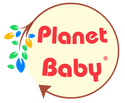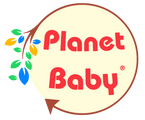Aucun produit dans le chariot
Free Shipping to Canada & USA +$100
This Colored Organics Knotted Hat is a newborn necessity. Featuring an adjustable tie knot, our hat is snug and comfy.
Sizing:
XS / S - average age 3-6M
M / L - average age 6-12M
Our use of water-based based dyes will ensure every piece of clothing we make retains its long lasting color vibrancy and durability, while remaining environmentally friendly, naturally hypoallergenic and gentle on your child's skin.
When you purchase this baby hat, you do more than provide comfortable organic clothing for your little girl or boy. You improve the lives of the people who made the garment. We adhere to the highest global textile and labor standards to ensure that the people involved in production are treated well and paid fairly.
You do more than ensure the happiness and well being of your child, you positively affect people's lives around the world - now that's true comfort.

Our clothing is created using the Global Organic Textile Standard (GOTS), the world’s leading processing standard for textiles made from organic fibers. Only products that contain a minimum of 70% organic fibers can become GOTS certified. All accessories, dyes, and other inputs must meet certain environmental and toxicological criteria.
Organic cotton is grown natural and sustainable, without herbicides, pesticides or any other harmful chemicals. These safe farming methods preserve the soil, conserve energy, and help to protect the health of the people in the community where the cotton is grown. It also keeps our cotton clothing free of chemicals.
| ORGANIC | CONVENTIONAL | |
| Seed Preparation | Natural untreated GMO free seeds. | Typically treated with fungicides or insecticides. Possible GMOs. |
| Soil Preparation | Healthy soil through crop rotation. Retains moisture in soil from increased organic matter. | Synthetic fertilizers, loss of soil due to monocrop culture, intensive irrigation. |
| Weed Control | Healthy soil creates natural balance. Beneficial insects and trap crops used. | Aerial spraying of insecticides and pesticides. 9 of the most commonly used pesticides are known cancer-causing agents. |
| Harvesting | Natural defoliation from freezing temperatures or through the use of water management. | Defoliation induced with toxic chemicals. |
| Production | Warp fibers stabilized using double plying or non-toxic cornstarch. | Warp fibers stabilized using toxic waxes. |
| Whitening | Safe peroxide is used. | Chlorine bleaching creates toxic bi-products which are released into the environment. |
| Finishing | Soft Scour in warm water with soda ash for a PH of 7.5-8. | Hot water, synthetic surfactants, additional chemicals (sometimes formaldehyde). |
| Dyeing | Low-impact fiber-reactive or natural dyes with low metal and sulfur content. | High temperature with heavy metals and sulfur content. |
| Printing | Low-impact or natural pigments with no heavy metals. | Heavy metals in pigments run off into waterways polluting streams. |
| Marketing | Positive story can be told to differentiate you from your competitors. | None. As awareness of organic advantage expands, potential for negative image. |
| Price | Initial cost more expensive. Long term advantages priceless. | Initially cheaper. Long-term impact on environment devastating. |
| Item | Price | Qty | Total | |
|---|---|---|---|---|
| Subtotal |
$0.00 CAD |
|||
| Shipping | ||||
| Total | ||||

